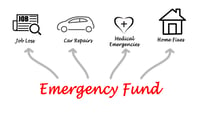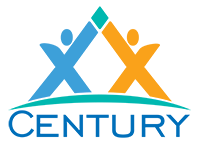Are you ready to declare your financial independence this fourth of July? For many people, they are simply getting by. They are living paycheck to paycheck, barely making their debt payments and don’t have a retirement plan or emergency fund. The good news is that you can declare your financial independence, save for unforeseen expenses and prepare for your retirement with our five-step plan.

1. Start by Declaring Your Financial Independence with a Budget

The first step in any good financial plan involves creating a budget. Take a look at all your household bills and expenses, including your subscription services. We recommend creating a spreadsheet of all your current bills. Then, in a separate column list all your income sources. Next cut unneeded or frivolous expenses.
Next, determine if you are earning more than you spend? If you’re not earning more than you spend each month, it may be a good idea to find some additional income sources, like gig work, a part-time side job, or a better-paying job. After all, you can’t save if you're spending every dime you earn.
2. Take Your Independence to the Next Level with an Emergency Fund

Emergency funds are for unforeseeable expenses, like car and appliance breakdowns or the sudden loss of a job. In the past, the recommendation was to have three to six months of your expenses in a savings account. Today, it may be more prudent to have between 12 and 18 months of living expenses saved. To effectively start your emergency fund, take another look at your budget. Add a row labeled emergency fund. If you have any money left over at the end of the month, put it in the savings account you use for your emergency fund. Once you’ve achieved 12 to 18 months of living expenses into your account, it’s time for the next step.
3. Get Independent by Going Debt-Free

Debt can be a necessary part of life. You need loans for homes and cars, and credit cards can help bridge the gap for sudden expenses prior to having your emergency fund. However, at some point, it’s time to get rid of debt. Take a long look at all your debts. You can even add a column for debts on your spreadsheet. How much do you owe? Determine the highest and lowest balances and the highest and lowest interest rates. Some people like to start by paying off their smallest loans, which can result in a quick feeling of accomplishment, or highest interest rate cards, which can save money in the long term.
Another option is to look at debt relief options, like debt settlement. If you’re completely overwhelmed with your debts and making your minimum monthly payments is becoming impossible, Century can help. Our Debt Specialists offer a free debt evaluation and customization of debt relief program that fits your situation. The goal of the program is to support you in your journey toward better financial health.
4. Light Your Financial Fireworks with Investments
Once your debt is under control, it’s time to light your financial fireworks with investments. This can be as simple as participating in your company’s 401k plan and starting your own independent IRA with your banking institution. You can also take out CDs and invest in the stock market, once you become more comfortable with investments.
5. Consider Sharing Your Financial Independence

Throughout the process of taking your financial independence into your own hands, you’ll learn a lot. Consider sharing what you’ve learned, so that others can take steps to enjoy financial independence. You can also start helping your younger relatives (i.e. nieces, nephews and grandchildren), by adding to a 529 college savings accounts and helping pay for extracurricular activities, to support them in broadening their knowledge and start out their adult lives with as little debt as possible.
To learn more about getting financially independent and for a free debt evaluation, give us a call at 855-417-6648.






